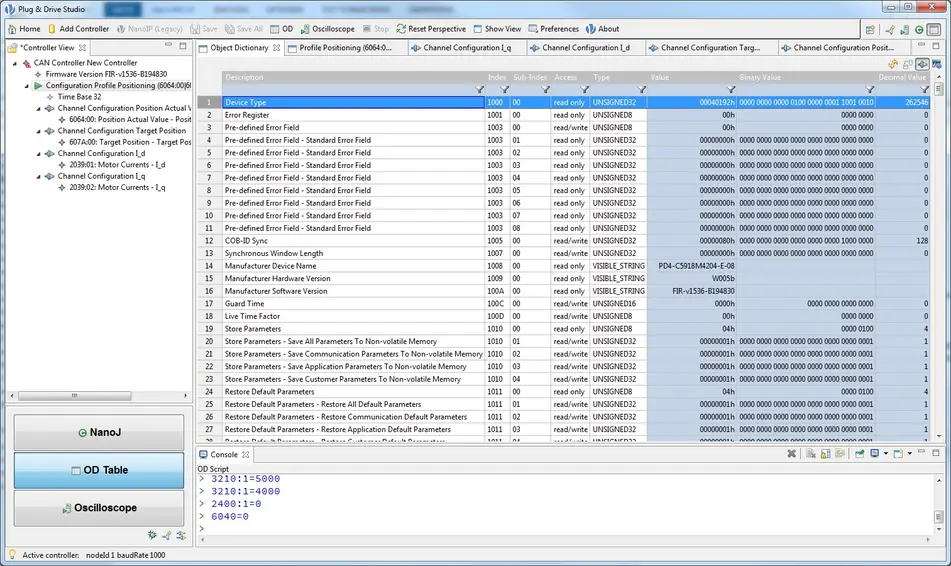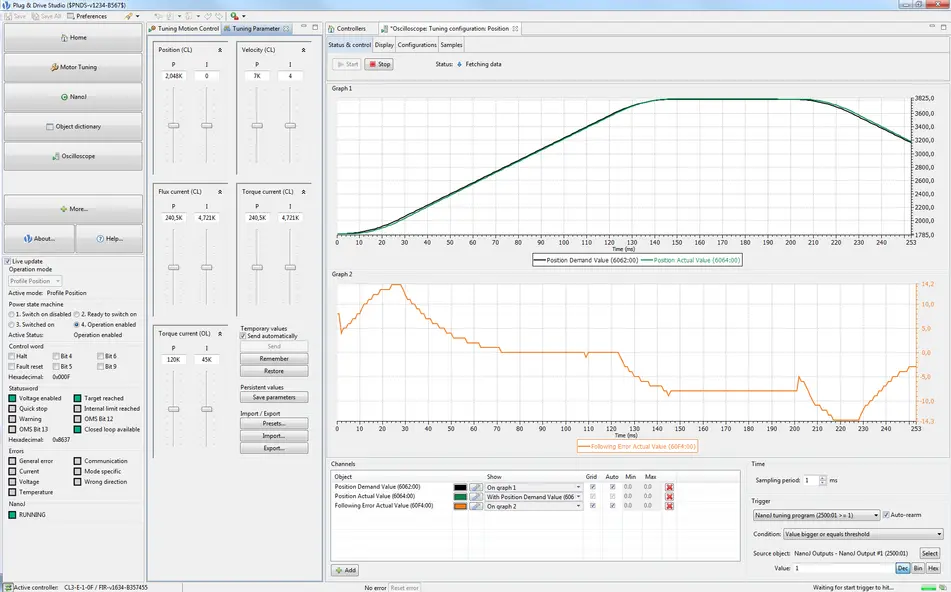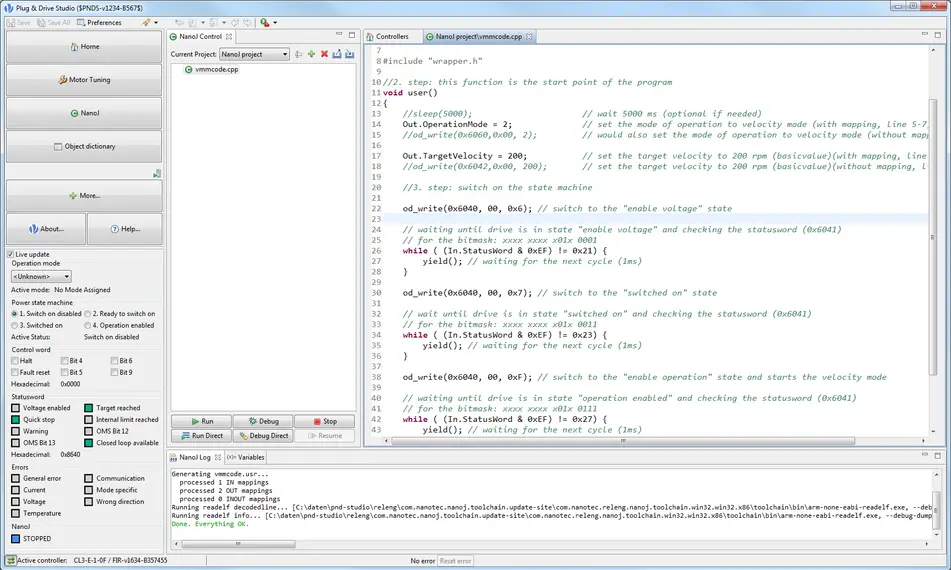For setting up and programming its motor controllers, Nanotec offers the Plug & Drive Studio. Setup is made easy thanks to several operating modes. The user can select and configure a mode using tabs. Intuitive menu navigation reduces the number of entries required by the user to just a few parameters, resulting in short setup times. At the same time, the controller can be configured via the object directory. Predefined filters can be used to display parts of the complete CiA 402 objects specific to a given task.

An integrated oscilloscope, which can be used to simultaneously display up to eight different objects with a resolution of up to one millisecond, is available for tuning the control parameters. Oscilloscope settings are predefined for standard tuning. Because all functions of the Plug & Drive Studio can run simultaneously, the object dictionary and the oscilloscope can be used to understand the behavior of the controller during program execution. As a result, customer-specific functions can be programmed easily and quickly.

For the programming of our controllers, we developed NanoJ V2, a C++ based programming language in which the user program runs in a so-called “sandbox”, which is executed in a fixed cycle of 1 ms. The settings and state values of the controller can thereby be read after every cycle. Therefore the user can not only respond to changes with a just few lines of code, but can also solve complex technical requirements. Because operation is possible in parallel with fieldbus communication, time-critical tasks can also be processed directly in the controller.
An integrated development environment is available for programming, consisting of a source editor with automatic code completion, compiler and debugger. The debugger supports the setting of breakpoints in the program and allows the content of variables to be read out at these breakpoints.
The firmware can be updated via CAN, USB and Ethernet. In addition, fieldbus communication can be logged directly, simplifying troubleshooting.

